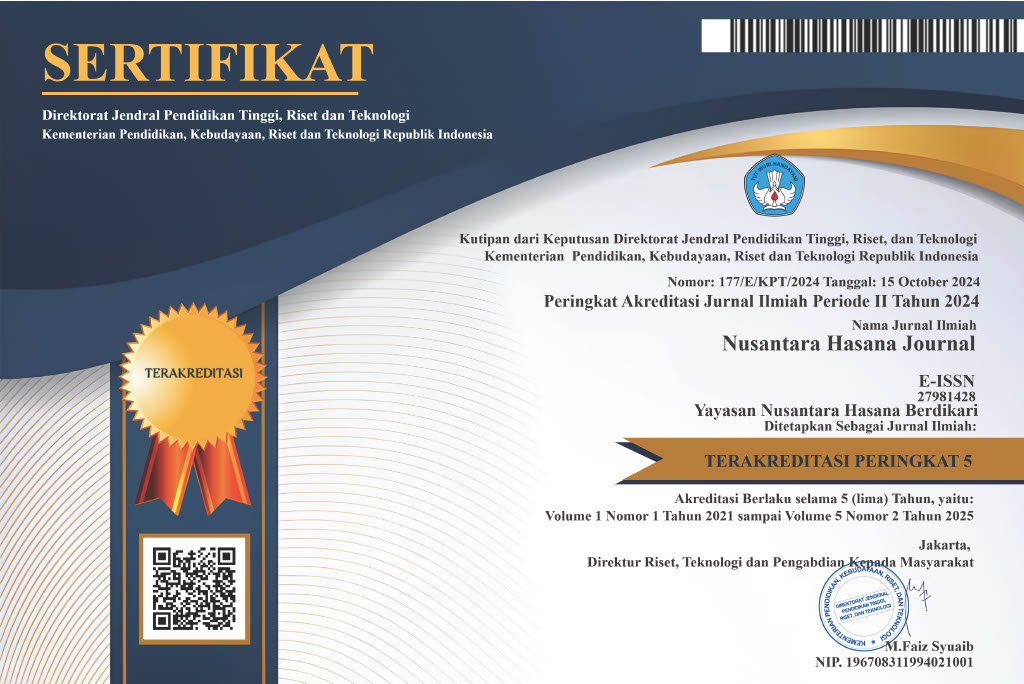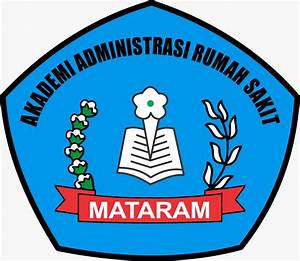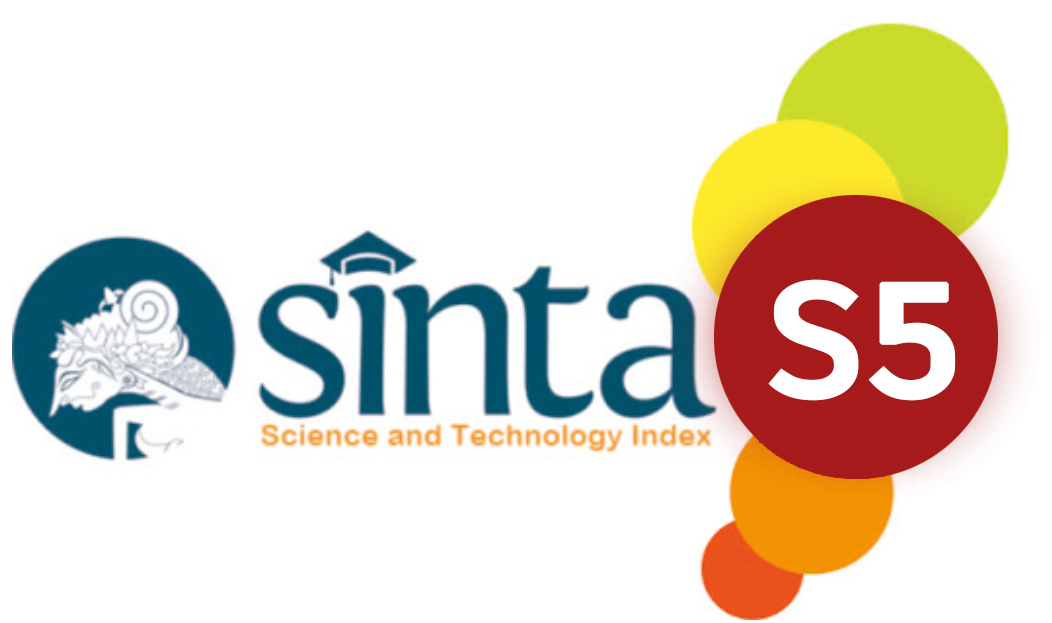PROFIL PNEUMONIA PADA PASIEN RAWAT INAP PARU RSUP M. DJAMIL
DOI:
https://doi.org/10.59003/nhj.v3i11.1113Keywords:
pneumonia, pneumonia germs, pneumonia medication, length of pneumonia treatmentAbstract
Pneumonia is an inflammation that affects the lung parenchyma, which can be caused by microorganisms, aspiration of gastric juices, foreign bodies and hypersensitivity reactions. The crude fatality rate (CFR) of pneumonia was quite high, namely 7.6%. In 2013, pneumonia increased was found 5878 cases with a prevalence of 3.1% in West Sumatra. Objective of this research to determine the profile of pneumonia in lung patients RSUP M. Djamil Padang. The type and design of this study is a retrospective observational descriptive study. This study using 54 samples with simple random sampling technique. Univariate data analysis and data processing using the computerized SPSS program version 25.0. Most of the patients with pneumonia were 56-65 years old, namely 17 people (32.7%), the most gender was male, namely 27 people (51.9%), the most occupation was IRT, namely 21 people (40.4 %), the most comorbidities were absent, namely 16 people (30.8%), the highest levels of leukocytes were abnormal, namely 45 people (86.5%), the most used drugs were the kinolone group, namely 34 people (65.4 %), the most germs were chlamydia pneumonia, namely 29 people (55.8%), the most length of treatment was daily, namely 34 people (65.4%). Most age is 56-65 years old, most sex is male, most occupation is IRT, most comorbidities are absent, most leukocyte levels are abnormal, most drugs used are kinolones, most bacteria are Chlamydia pneumonia , the most length of treatment is daily.
Downloads
References
Wilson LM. 2012. Penyakit pernapasan restriktif dalam Price SA, Wilson LM. 2012. Patofisiologi: konsep klinis prosses-proses penyakit E/6 Vol.2. Jakarta: EGC.
Sectish TP. 2008. Pneumonia. 18th ed. Phladelphia: WB Saunders
Price SA, Wilson LM. 2006. Patofisiologi: Konsep Klinis Proses-proses Penyakit Edisi 6. Jakarta: EGC.
Dahlan Z. 2009. Pneumonia, dalam Sudoyo AW, dkk (editor). Buku Ajar Ilmu Penyakit Dalam Edisi V. Jakarta: Pusat Penerbitan Departemen Ilmu Penyakit Dalam Universitas Indonesia.
American Lung Association. 2016. Pneumonia. Tersedia dari: http://www.lung.org/lung-health-and-diseases/lung-disease-lookup/ pneumonia/learn-about-pneumonia.html.
Wilson LM. 2012. Penyakit pernapasan restriktif dalam Price SA, Wilson LM. 2012. Patofisiologi: konsep klinis prosses-proses penyakit E/6 Vol.2. Jakarta: EGC.
PDPI. 2014. Pneumonia Komuniti: Pedoman Diagnosis dan Penatalaksanaan di Indonesia. Edisi II. Jakarta: Perhimpunan Dokter Paru Indonesia.
Nursalam. 2003. Konsep Dan Penerapan Metodologi Penelitian Ilmu Keperawatan Pedoman Skripsi Tesis dan Instrumen Penelitian Keperawatan. Jakarta: Salemba Medika.
Galves JA Maria LR, Emma M, Jose AS. 2013. The impact of socio-economic status on selfrated health/jurnal hubungan faktor sosial ekonomi dengan kejadian pneumonia pada anak dibawah umur lima tahun di Surakarta.
Cascini S AN, Incalzi RA, Pinnarelli L, Mayer F, Arcà M, Fusco D, Davoli M. 2018. Pneumonia burden in elderly patients: a classification algorithm using administrative data. BMC Infectious Disease (559).
Ida Bagus Subanada. 2010. Faktor-faktor yang berhubungan dengan pneumonia bakteri pada anak. Sari Pediatri, 12 (3).
Whalen K, Finkel R, Panavelil TA. 2015. Lippincott Illustrated Reviews:Pharmacology. 6th Ed. Philadelphia: Wolters Kluwer.
Brunton LL, Parker KL, Blumenthal DK, Buxton IL. 2008. Goodman & Gilman's The Pharmacological Basis of Therapeutics. 11th ed. New York: McGraw- Hill.
Zavascki AP, Goldani LZ, Li J, Nation RL. 2007. Polymyxin B for the treatment of multidrug-resistant pathogens: a critical review. The Journal of Antimicrobial Chemotherapy, 60 (6): 1206-1215.
Nation RL, Li J, Cars O, Couet W, Dudley MN, Kaye KS. Framework for optimisation of the clinical use of colistin and polymyxin B: the Prato polymyxin consensus. The Lancet Infectious Diseases.15 (2): 225-234.
Walker R & Whittlesca C. 202. Clinical Pharmacy and Therapeutics: fifth edition, London: Churchill Livingstone Elsevier.
Cunha A Burke, MD. 2013. Community Acquired Pneumonia.
Mongardon N, Max A. 2012. Epidemiology and outcome of severe pneumococcal pneumonia admitted to intensive care unit: multicenter study.
Lynch T, Gouin S, Larson C, Patenaude Y. 2004. Does the lateral radiograph help pediatric emergency physicians diagnose pneumonia: a randomized clinical trial. Acad Emerg Med, 11: 625–629.
Blasi F, Garau J, Medina J, Ávila M, McBride K, Ostermann H. 2013. Current management of patients hospitalized with community-acquired pneumonia across Europe: outcomes from Reach. Respir Res, 14: 44.
Lévesque S, Dufresne PJ, Soualhine H, Domingo MC, Bekal S. 2015. A Side by Side Comparison of Bruker Biotyper and VITEK MS: Utility of MALDI-TOF MS Technology for Microorganism Identification in a Public Health Reference Laboratory. PLoS ONE, 10 (12): 1–21.
Fournier PE, Dubourg G,Raoult D. 2014. Clinical detection and characterization of bacterial pathogens in the genomics era. Genome medicine 6 (11): 114.
Lagier JC, Edouard S, Pagnier I, Mediannikov O, Drancourt M. 2015. Current and past strategies for bacterial culture in clinical microbiology. Clinical Microbiology Reviews, 28 (1): 208-236.
Nadhira, Tola MS, Arsyad, M. 2016. Profil Penggunaan Antibiotik Pada Pasien Pneumonia Di Instalasi Rawat Inap di Rumah Sakit Islam Jakarta Cempaka Putih Selama Periode 1 Januari –Desember 2016 Dan TinjauannyaMenurut Pandangan Islam. Skripsi. Jakarta.
Sotianingsih, Samsirun H. 2019. Gambaran Klinis Dan Laboratorium Pada Pasien Pneumonia Di Icu Rsud Raden Mattaher Jambi. JMJ. Fakultas Kedokteran Univeritas Jambi, 7 (2): 238-244.
Farida, Y., Ttrisna, A. 2017. Study of Antibiotic Use on Pneumonia Patient in Surakarta Referral Hospital. JPSCR, 2: 44-52.
Raising R, Rosalina V. 2019. Efektifitas Antibiotik Terhadap Perubahan Suhu Dan Leukosit Pada Pasien Pneumonia. Stikes Bhakti Husada Mulia Madiun.
Sari E, Rumende M. 2016. Faktor–Faktor yang Berhubungan dengan Diagnosis Pneumonia pada Pasien Usia Lanjut. JPDI, 3 (4): 183.
Kurniawan, MA. 2015. Profil Pasien Usia Lanjut dengan Pneumonia Komunitas di RSUD Cengkareng tahun 2013-2014. Skripsi. Jakarta: Fakultas Kedokteran Universitas Islam Negri.
Kardi, Anita, CD, Ruhyana. 2015. Analisis Faktor Risiko Terjadinya Pneumonia Nosokomial Di Rsup Dr. Sardjito. Skripsi. Yogyakarta: Stikes Yogyakarta.
Siahaan S. 2015. Studi pengembangan kebijakan pengendalian resistensi antimikroba di Indonesia, disampaikan pada Diseminasi Hasil Kajian Studi Pengembangan Kebijakan Pengendalian Resistensi Antimikroba di Indonesia tgl 23 April 2015.
Jalil AB. 2015. Profil Pasien Pneumonia Komunitas di RSUD Cengkareng tahun 2013-2014. Skripsi. Jakarta: Fakultas Kedokteran Universitas Islam Negeri Jakarta.
Firmansyah A, Amin Z, Loho T. 2015. Faktor-Faktor Prediktor Mortalitas Community-Acquired Pneumonia dalam Perawatan Inap di Rumah Sakit Cipto Mangunkusumo. Indonesian Journal of CHEST, 2 (2): 45-53.
Notoadmodjo. 2002. Metodologi Penelitian Kesehatan. Jakarta: Rineka Cipta.
Downloads
Published
How to Cite
Issue
Section
License
Copyright (c) 2024 Nilas Warlem

This work is licensed under a Creative Commons Attribution-NonCommercial-ShareAlike 4.0 International License.
NHJ is licensed under a Creative Commons Attribution-NonCommercial-ShareAlike 4.0 International License.
Articles in this journal are Open Access articles published under the Creative Commons CC BY-NC-SA License This license permits use, distribution and reproduction in any medium for non-commercial purposes only, provided the original work and source is properly cited.
Any derivative of the original must be distributed under the same license as the original.
























